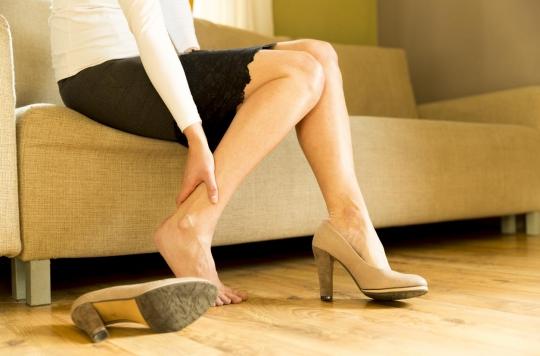
About nutrition, leg massage and exercise
Varicose veins are not nice. Sometimes they are so large and painful that medical intervention is necessary; but often you can alleviate the discomfort yourself by making lifestyle changes. With these nutrition and exercise tips you will come a long way.
Varicose veins are tortuous blood vessels that are often visible through the skin. They can be very small blood vessels or larger dilated vessels that are visible as strands. About 25 percent of the population – including men – suffers from varicose veins.
Varicose veins do not always cause complaints. A number of people with varicose veins suffer from itch, An heavy, tired feeling in the legs or pain. Risk factors are hereditary burden, age, pregnancy and a standing occupation. Also people who to smoke, people with overweight or people whose hearts are not pumping vigorously enough are especially prone to getting varicose veins.
Movement
As mentioned, lifestyle can influence the development of varicose veins. More exercise, doing calf muscle exercises and avoiding long sitting and standing can reduce the symptoms, although the varicose veins will not go away. Walking, cycling, swimming and jogging are also good to prevent varicose veins. Walking barefoot on sand, grass or gravel and walking on tiptoe are also good exercises. Pre-existing varicose veins endure much less pressure due to the movement, making them less painful. And good blood circulation helps prevent new varicose veins.
Nutrition
Once you have varicose veins, they will not go away on their own. There are therefore no foods that can cure varicose veins. There are nutrients that help prevent varicose veins and reduce existing complaints, partly because they are good for blood circulation. A healthy diet also helps prevent obesity, one of the risk factors for varicose veins.
A healthy, varied diet with lots of whole-wheat products is actually the basis here. Lime and silicic acid (silicea) are said to help prevent varicose veins and reduce symptoms. The latter is found in, among other things, whole grains, milk, egg yolk, cabbages and, for example, parsnips. Foods rich in calcium are, for example, white cabbage, carrots, almonds, raisins and sauerkraut. Blueberries, beta-carotene, selenium, zinc, vitamins C and E and omega-3 fatty acids are also attributed to relieve varicose veins. Remember that vitamin E has a blood-thinning effect, so it is not wise to take a supplement if you are taking blood thinners.
In any case, consult your doctor first in case of blood thinners. Furthermore, aescin, the active ingredient from wild horse chestnut, and vine leaves are said to improve the circulation of the large leg veins and strengthen the vein walls and thus have a beneficial effect on varicose veins. Finally, avoid alcohol, coffee and overly spicy food and rather stop smoking.
Clothing
If you have a predisposition to varicose veins, stand a lot of work or perhaps already have varicose veins, adapted clothing can help to relieve the burden. For example, avoid tight-fitting, constricting clothing and ensure that your feet stay warm by wearing stockings and warm shoes. Sometimes an elastic bandage can provide relief and the doctor may prescribe compression stockings.
body care
Exchange baths stimulate blood circulation and are therefore recommended for varicose veins. Also massage of the legs, possibly with a special cream, is a good idea. Avoid heat and sunlight. Heat causes the veins in the legs to expand. Preferably no sunbathing or Turkish bath. Because of the heat it is hair removal of your legs with warm wax is also not recommended; rather opt for a razor.

















